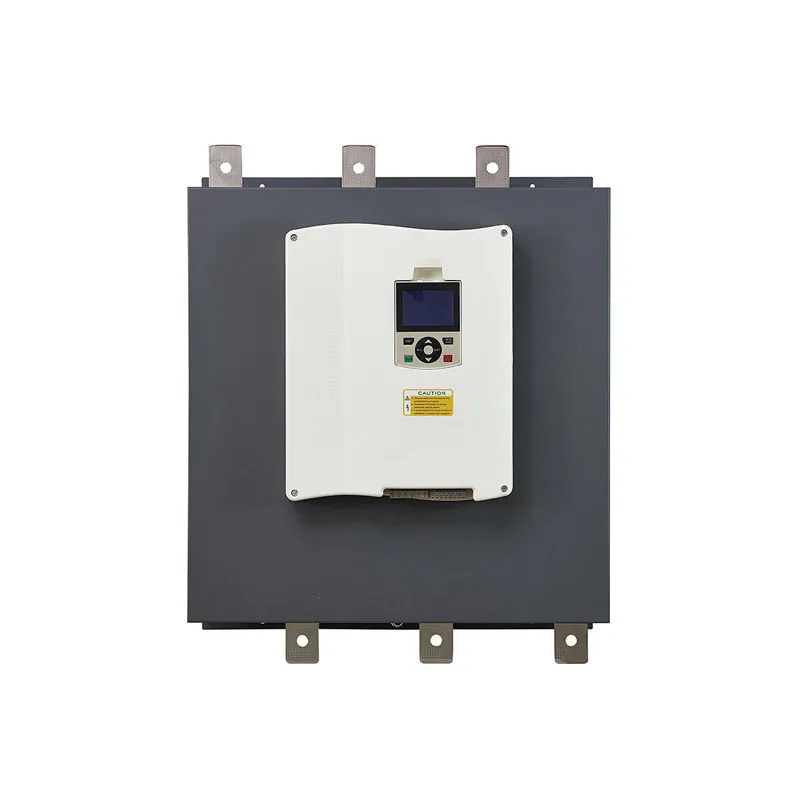AC Soft Starter: Enhancing Efficiency and Longevity in Electrical Systems
2024-08-26
In the realm of industrial and commercial electrical systems, the AC soft starter is a crucial component designed to improve the performance and longevity of AC motors. By providing a smooth and controlled start-up process, the AC soft starter reduces mechanical stress and electrical strain, leading to enhanced efficiency and reduced maintenance costs. In this blog, we’ll explore the functions, benefits, and applications of AC soft starters, and how they contribute to more reliable and efficient electrical systems.
What is an AC Soft Starter?
An AC soft starter is an electronic device used to gradually increase the voltage supplied to an AC motor during start-up. This gradual ramp-up of voltage allows the motor to accelerate smoothly from a standstill to its full operational speed, rather than starting abruptly. The soft starter controls the motor's acceleration and deceleration phases, minimizing the impact on both the motor and the connected machinery.
Key Features of AC Soft Starters
1. Voltage Ramp-Up Control: Soft starters provide a controlled increase in voltage, allowing the motor to gradually reach its full speed. This helps to reduce the initial inrush current and mechanical stress on the motor and connected equipment.
2. Adjustable Start and Stop Settings: Users can configure the soft starter to suit specific applications by adjusting start and stop parameters. This flexibility ensures optimal performance for various types of motors and loads.
3. Overload Protection: AC soft starters are equipped with overload protection features to prevent motor damage in case of excessive current or operating conditions. This enhances the reliability and longevity of the motor.
4. Current Limiting: Soft starters limit the starting current to prevent electrical surges and reduce the impact on the power supply system. This helps to maintain stable operation and prevent voltage dips.
5. Fault Detection and Diagnostics: Many soft starters include built-in diagnostic tools that monitor the motor's performance and detect faults. This allows for timely maintenance and troubleshooting, minimizing downtime.
6. Built-In Bypass: Some models come with a built-in bypass function that connects the motor directly to the power supply once it has reached its full speed. This reduces the heat generated by the soft starter and improves overall efficiency.
7. User-Friendly Interface: Modern soft starters feature intuitive interfaces and programmable settings, making it easy for users to configure and operate the device according to their needs.
8. Communication Protocols: Advanced soft starters may include communication capabilities for integration with automation systems, allowing for remote monitoring and control.
Benefits of Using an AC Soft Starter
1. Reduced Mechanical Stress: By gradually ramping up the motor's speed, soft starters minimize the mechanical stress on the motor and connected equipment. This extends the lifespan of components and reduces the need for frequent repairs.
2. Lower Starting Current: Soft starters reduce the initial inrush current, which helps to prevent electrical surges and avoid tripping circuit breakers. This leads to more stable power supply and reduces the risk of electrical issues.
3. Improved Energy Efficiency: Smooth start-up and controlled acceleration lead to more efficient operation, reducing energy consumption and lowering overall operating costs.
4. Enhanced Motor Protection: Soft starters provide overload protection and fault detection, safeguarding the motor against potential damage and ensuring reliable performance.
5. Reduced Wear and Tear: Gradual acceleration and deceleration reduce wear and tear on mechanical components, resulting in fewer maintenance requirements and longer equipment life.
6. Improved System Reliability: By controlling the start-up process and minimizing electrical disturbances, soft starters enhance the overall reliability and stability of the electrical system.
7. Versatility: AC soft starters are suitable for a wide range of applications, including pumps, fans, conveyors, and compressors. Their adaptability makes them a valuable addition to various industrial and commercial settings.
8. Ease of Installation and Operation: Soft starters are designed for straightforward installation and operation. User-friendly interfaces and adjustable settings make it easy to tailor the device to specific application requirements.
Applications of AC Soft Starters
1. Pumps: Soft starters are commonly used with pumps to prevent water hammer and reduce mechanical stress during start-up. This is particularly important in applications such as water supply and wastewater treatment.
2. Fans: In ventilation and air conditioning systems, soft starters help manage the starting current and reduce the impact on fan blades and bearings.
3. Conveyors: For conveyor systems, soft starters provide smooth acceleration and deceleration, ensuring consistent operation and reducing wear on conveyor belts and motors.
4. Compressors: Soft starters protect compressors from the effects of inrush current and mechanical stress, enhancing their reliability and efficiency in applications such as refrigeration and air conditioning.
5. HVAC Systems: In heating, ventilation, and air conditioning (HVAC) systems, soft starters help manage the start-up of large motors, improving system performance and reducing energy consumption.
6. Industrial Machinery: Soft starters are used in various types of industrial machinery to improve start-up performance and extend the life of mechanical components.
7. Agricultural Equipment: Agricultural machinery such as irrigation systems and grain handling equipment benefits from the controlled start-up provided by soft starters, leading to more reliable operation.
Choosing the Right AC Soft Starter
1. Motor Specifications: Select a soft starter that matches the voltage, current, and power ratings of your motor. Ensure compatibility with the motor’s operational requirements.
2. Application Requirements: Consider the specific needs of your application, such as starting time, acceleration rates, and control features. Choose a soft starter that provides the necessary functionality for optimal performance.
3. Environmental Conditions: Evaluate the operating environment, including temperature, humidity, and potential exposure to dust or moisture. Choose a soft starter with appropriate enclosure ratings and protection features.
4. Ease of Integration: If integration with existing automation systems is required, select a soft starter with communication capabilities and compatibility with your control systems.
5. Budget and Cost: Assess the cost of the soft starter in relation to its features and benefits. Consider the long-term savings in maintenance and energy efficiency when making your decision.
Maintenance and Care Tips
1. Regular Inspection: Periodically inspect the soft starter for signs of wear, damage, or overheating. Ensure that all connections and components are in good condition.
2. Clean the Device: Keep the soft starter clean and free from dust and debris. Use appropriate cleaning methods and avoid using harsh chemicals that could damage the device.
3. Check Settings: Verify that the soft starter’s settings are correctly configured for the motor and application. Adjust parameters as needed to ensure optimal performance.
4. Monitor Performance: Use diagnostic tools and monitoring features to track the performance of the soft starter and the motor. Address any issues promptly to prevent potential problems.
5. Follow Manufacturer’s Guidelines: Adhere to the manufacturer’s maintenance and operating guidelines to ensure the proper functioning and longevity of the soft starter.
Conclusion
The AC soft starter is an essential component for enhancing the efficiency and longevity of AC motors in various applications. By providing controlled start-up and reducing mechanical and electrical stress, soft starters contribute to more reliable and cost-effective operation. Whether for industrial machinery, HVAC systems, or agricultural equipment, choosing the right soft starter ensures optimal performance and reduced maintenance. Embrace the benefits of AC soft starters to improve the reliability, efficiency, and lifespan of your electrical systems, and enjoy smoother, more efficient operations in your applications.



